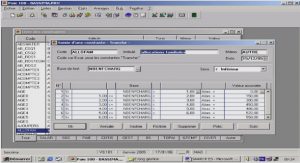SPSS tutorial for beginners, tutoriel & guide de travaux pratiques en pdf.
A Review of the Statistics that you learnt (or did not learn?) in College
Before we start to work on the actual software, we think it is necessary to go through some basics of the statistics involved. We included this section because it is not enough to know to use SPSS. You need to know what test to use in what situation and how to plan your research. If you think, you already know this stuff, that’s fine. Just skip it or consider it a review before you plunge into actually using the software. Here are a few things that will be included in “The basics of Statistics” section.
- Research Design
- Evaluation of Measuring Instruments
- Sampling and Sample Size
- Mean, variance, Standard deviation, Degrees of freedom
- T-test
- Analysis of variance
- Correlation and Regression
- Chi-square test, Sign test, Man-Whitney U test etc
- Statistical abuses
Research Design
In order to get good data, you need good research design skills. Even if you are reading someone else’s research, to understand it better, it helps to know something about correct and incorrect research design. There are lots of ways to design a research project and not all of it is documented. Here, we will describe some of the more common methods plus will give you a few tips for your research design too.
ANIMAL RESEARCH
Most biomedical research is first conducted using animal models. Much of this initial animal research cannot be performed in humans due to ethical, cost and/or time considerations.
a) Selection of species
The particular species to be used as a model is chosen for one/more of the following reasons:
- Similarity of the organ system, disease, metabolic pathways, etc. to the equivalent in human beings.
- Small size for ease and economy in housing, feeding, manipulation, etc.
- Relatively short life span to allow for life-time studies, studies over more than one generation, etc.
- Comparisons to work of other investigators in the same or similar model.
b) Selection of controls
This is one of the most important considerations in the design of an animal experiment. Let us say the investigator is performing a study to determine the deficiency of a particular nutrient on some measurable parameter. Animals in the experimental group would be fed a diet containing required amounts of all known nutrients except the nutrient under study (or the diet would be low in the nutrient). The control group would receive a normal (same in all respects but with the nutrient present) diet.
The controls need to be similar to the experimental animals in all respects like weight, age, genetic strain, etc. In fact, a group of animals need to be randomly divided into experimental animals and controls. To avoid bias, someone other than the principal investigator can perform the actual separation.
c) Feeding of controls
Some animals will consume less of an incomplete diet than they will of a nutritionally complete diet. If the experiment is run as designed above, the investigator may get false results that show that deficiency of the nutrient influences the variable being measured. In reality, the variable may have changed because of the low quantity of food consumed by the experimental animals. To avoid this, it may be best to have a second control.
I. Resear ch Design.
a. ANIMAL RESEARCH
b. HUMAN RESEARCH
II ) Evaluation of Meas uring Instruments
a) Measuring Sensitivity and Specificity of a test
b) Samplin g and Sample Size.
a) Sampling procedures.
b) Sample Size
(III ) Some useful terms to know
a) The t-test.
c) Correlation….
f) McNemar test
j) Quiz to test yourself
SECTION II SPSS at Last
I) Typical SPSS Sess ion
(II ) Cr eating a New Da ta File with the Da ta Editor
(III ) Loading an existing Da ta File into the Da ta Editor
(IV ) Cr eating and Executing SPSS Comma nds
k) The EXPLORE command
l)The FREQUENCIES command
w) Mann-Whitney U test
x) Bivariate Correlations
y) Survival
SPSS Syntax Windows






